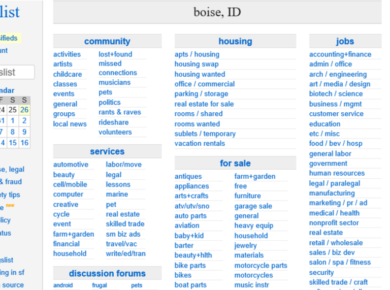All about APAP login
The APAP login is a web-based portal that allows members of the Association of Performing Arts Professionals (APAP) to access a range of resources and manage their membership. Here are some key details about the APAP login:
- How to access the APAP login: To access the APAP login portal, you will need to be a member of the association. You can go to the APAP website and click on the “Login” button in the top right corner of the page. This will take you to the login page where you can enter your username and password to access your account.
- What you can do with the APAP login: Once you log in to the APAP portal, you can do a range of things such as manage your profile, update your contact information, register for events and conferences, pay dues and fees, access member-only resources such as research reports, professional development tools, and networking opportunities, and engage with other members of the association through the online community.
- How to reset your password: If you forget your password or need to reset it for any reason, you can click on the “Forgot Your Password?” link on the login page. This will prompt you to enter your username or email address associated with your account, and you will receive instructions on how to reset your password.
- How to become a member: If you are not currently a member of APAP, you can visit the “Join” section of the APAP website to learn more about the different membership categories and benefits. Once you select the appropriate membership category, you can complete the online application and pay any applicable dues or fees to become a member.
- How to contact support: If you have any issues or questions related to the APAP login or your membership, you can contact the association’s support team through the “Contact Us” page on the website. The support team will be able to assist you with any issues or questions you may have about your account or membership.
Benefits of the APAP Login
The APAP login is a term that could refer to different login portals depending on the context. However, assuming that you are referring to the login portal for members of the Association of Performing Arts Professionals (APAP), here are some potential benefits of using it:
- Access to member-only resources: Once you log in as a member of APAP, you may be able to access a range of resources that are not available to the general public. These resources could include professional development tools, research reports, networking opportunities, and more.
- Profile management: The APAP login may allow you to manage your profile on the association’s website. You may be able to update your contact information, add a photo or bio, and adjust your communication preferences.
- Event registration: APAP members may be able to register for events and conferences through the association’s login portal. This can save time and make it easier to keep track of your attendance at various industry events.
- Payment management: If you have outstanding dues or fees with APAP, you may be able to manage your payments through the login portal. This can help you stay on top of your financial obligations and ensure that your membership remains active.
- Community engagement: By logging in to APAP’s member portal, you may be able to connect with other members of the association and engage in discussions around issues that affect the performing arts industry. This can be a valuable way to build your professional network and stay up-to-date on the latest trends and best practices.
What is an APAP login? Reversible sleep apnea therapy device
The term “APAP login” can refer to two different things, depending on the context.
APAP Login as Association of Performing Arts Professionals: In the context of the Association of Performing Arts Professionals (APAP), the APAP login is a web-based portal that allows members to access member-only resources, manage their profile, register for events, pay dues, and fees, and engage with other members of the association through an online community.
APAP Login as an Auto-Adjusting Positive Airway Pressure Device: In the context of sleep apnea therapy, APAP (Auto-Adjusting Positive Airway Pressure) is a type of continuous positive airway pressure (CPAP) device that can automatically adjust the pressure level based on the patient’s needs. The APAP login in this context is not a web portal but refers to the device’s user interface, which allows the patient to access and adjust various settings, such as the pressure range, ramp time, and humidification level. The device may also have a data logging function, which allows the patient and healthcare provider to review treatment efficacy and compliance data.
APAP Login: Join the Association of Performing Arts Professionals Today!
However, I can provide you with information on how to join the Association of Performing Arts Professionals (APAP).
To become a member of APAP, you can visit their website at https://www.apap365.org/Join-APAP, where you can find information on the different types of memberships they offer and the corresponding fees. APAP offers memberships for individuals, organizations, and students, and each membership type comes with different benefits and resources.
Once you have selected the membership type that best suits your needs, you can fill out an online application and pay the membership fee. After your application has been processed and approved, you will have access to a wide range of resources and opportunities to network with other professionals in the performing arts industry.
Alternatives to APAP
There are several alternatives to the Association of Performing Arts Professionals (APAP) that you may want to consider. Here are a few options:
- International Society for the Performing Arts (ISPA): ISPA is a global network of arts professionals that supports the development of the performing arts through networking, professional development opportunities, and advocacy. They offer membership for individuals, organizations, and students.
- National Performance Network (NPN): NPN is a network of artists, presenters, and other arts professionals that supports the creation and touring of contemporary performing and visual arts. They offer membership for artists and organizations and provide opportunities for networking, funding, and professional development.
- League of American Orchestras (LAO): LAO is a membership organization for orchestras and individuals in the classical music industry. They provide resources and support for orchestras, as well as professional development opportunities for individuals working in the field.
- Theatre Communications Group (TCG): TCG is a membership organization for theatre professionals, including artists, administrators, and organizations. They offer a wide range of resources and programs, including advocacy, research, and professional development opportunities.
These are just a few of the many organizations that support the performing arts industry. You may want to research and explore different options to find the one that best fits your needs and interests.
The field of Automatic Positive Airway Pressure (APAP) has been around since the late 1980s, when it was first developed as a treatment for sleep apnea. APAP is a type of non-invasive ventilation (NIV) that involves using pressurized air to keep the airways open while sleeping. Over the past three decades, APAP has gone through many changes and advancements, making it one of the most widely used treatments for sleep apnea today.
Risks associated with APAP Login
APAP (Advanced Passenger Processing) is a mandatory requirement by the United Kingdom’s Border Force for all airlines flying to and from the UK. It is an electronic system that is used to provide passenger information in advance of their arrival or departure from the country. The APAP Login system allows airlines to submit passenger data electronically, including passport details, visa information, and other travel documents.
However, there are risks associated with using APAP Login, including potential security breaches and data theft. Airlines must ensure that they have proper security measures in place to protect passenger data during transmission and storage. Additionally, there may be legal implications if airlines fail to comply with strict UK Border Force regulations regarding data protection.
Furthermore, issues related to false positives could arise as well – when individuals are flagged by the system even when they do not pose any threat. This can cause unnecessary delays at border control checkpoints and potentially lead to negative experiences for passengers. Therefore, it is important for airlines to carefully consider these potential risks when implementing the APAP Login system into their operations.
Pros and Cons of APAP login
APAP or the American Public Power Association was founded in 1940 and is a national organization that represents public power systems in the United States. APAP has been working towards promoting and protecting the interests of public power utilities since its inception. The organization provides legislative advocacy, education, and networking opportunities to its members.
The APAP website offers a login feature for its members which enables them to access exclusive content and resources. One of the pros of APAP login is that members can stay up-to-date with industry news, events, and training opportunities. Moreover, they can network with other members from different parts of the country through online communities and discussion forums.
However, one of the cons of APAP login is that not all resources are available to all membership levels. Some advanced features may require higher levels of membership which could mean additional costs for some users. Additionally, accessing online content requires an internet connection which could be an issue in areas with limited connectivity or slow internet speeds.
Instructions for opening a new account
Opening a new account with the Association of Performing Arts Professionals (APAP) is a straightforward process that can be done online or through the mail. To get started, you will need to visit the APAP website and click on the “Join” button located in the top right corner of the homepage. From there, you will be directed to a page where you can select your membership type and create an account.
Once you have selected your membership type, you will be prompted to provide basic personal information such as your name, email address, and phone number. You will also need to choose a username and password that will allow you to access member-only content on the APAP website. Finally, you will need to review and agree to the terms and conditions of membership before submitting your application.
If you prefer not to join online, you can download a membership application from the APAP website and submit it by mail along with your payment information. Once your application has been processed by APAP staff members, they will send an email confirmation with instructions for accessing member resources such as job listings, event calendars, and professional development opportunities.
How can I recover my forgotten password?
If you have forgotten the password to your APAP account, there are several ways to recover it. The first step is to visit the login page and click on the “forgot password” link. You will then be prompted to enter the email address associated with your account. Once you submit this information, you should receive an email with instructions on how to reset your password.
Another option is to contact customer support for assistance in recovering your password. They may ask you some security questions or require additional verification before resetting your password for you.
In order to avoid forgetting your password in the future, it’s important to create a strong and memorable one that includes a combination of letters, numbers, and symbols. Additionally, consider using a password manager tool that can securely store all of your passwords in one place for easy access and retrieval if needed.
How does it work?
APAP, or acetaminophen, is a widely used over-the-counter pain reliever and fever reducer. It was first discovered in the late 1800s and has been in use for over a century. Acetaminophen works by inhibiting certain enzymes in the body that produce prostaglandins, which are responsible for causing pain and inflammation. By reducing the production of these enzymes, acetaminophen helps to alleviate pain and reduce fever.
Acetaminophen is known to be safe when taken at recommended doses; however, it can be dangerous when taken in excessive amounts. Overdose of acetaminophen can cause liver damage or even death. This is because too much of the drug overwhelms the liver’s ability to process it effectively. To prevent overdose, it’s important to follow all dosage instructions carefully and not exceed the recommended amount.
In conclusion, APAP (acetaminophen) is a commonly used medication that works by reducing the production of certain enzymes in the body that cause pain and inflammation. While generally safe when taken at recommended doses, excessive consumption can lead to serious health problems such as liver damage or death. It’s important to always read labels carefully and follow dosage instructions closely to ensure safety when using this medication.
Special Guidelines of APAP convention
The Association of Performing Arts Professionals (APAP) was founded in 1957 as the Association of College and University Concert Managers. Over the years, APAP has grown to become a leading organization for performing arts professionals across the United States and beyond. Today, APAP serves more than 1,600 members from all corners of the performing arts industry.
One of the highlights of APAP’s annual calendar is its convention, which takes place every January in New York City. The convention provides an opportunity for performing arts professionals to network with one another, attend workshops and panel discussions on industry trends and best practices, and see live performances by some of today’s most exciting artists.
But attending the APAP convention can be overwhelming for first-timers. That’s why there are special guidelines in place to help attendees get the most out of their experience. For example, it’s recommended that attendees bring plenty of business cards to hand out during networking events. It’s also important to prioritize which sessions and performances you want to attend ahead of time, as there may be multiple events taking place simultaneously. Finally, it’s worth taking advantage of opportunities to meet with potential partners or clients outside of scheduled programming – whether that means grabbing a coffee between sessions or attending an informal after-party event hosted by one of your peers.
Is APAP the same as CPAP?
The first automatic positive airway pressure (APAP) machine was developed in the early 1990s. It was designed to address the issue of pressure intolerance with continuous positive airway pressure (CPAP) therapy. Unlike CPAP, which delivers a fixed amount of pressure throughout the night, APAP adjusts the pressure in response to changes in breathing patterns.
The development of APAP marked a significant advancement in sleep apnea treatment, as it provided patients with greater comfort and flexibility during therapy. With APAP, patients no longer had to tolerate constant high-pressure levels that could cause discomfort or mask leaks.
Today, APAP is commonly used as an alternative to CPAP for those who find it difficult to tolerate fixed pressures or have variable breathing patterns during sleep. Although they share similarities in terms of function and purpose, APAP and CPAP are not the same thing and should not be used interchangeably without proper medical guidance.
How loud is an APAP machine?
APAP, or Automatic Positive Airway Pressure machines have come a long way since their inception in the early 1990s. APAP machines are used to treat obstructive sleep apnea (OSA) by delivering pressurized air to keep the airway open during sleep. The first-generation APAP machines were loud and bulky, making it difficult for users to tolerate them during sleep. However, with advancements in technology, modern APAP machines have become much quieter and more comfortable.
Today’s APAP machines are designed with noise-cancellation features that help reduce sound levels. Noise-reduction features include advanced motor technology, foam insulation, and special design elements to minimize vibrations. These improvements have made modern-day APAP devices virtually silent compared to their predecessors.
While some people may still find the sound of an APAP machine disruptive during sleep, most users report little or no disturbance from the device’s noise level. It is important for those considering using an APAP machine to consult with their healthcare provider about any concerns they may have regarding noise levels and other aspects of therapy so that they can make informed decisions regarding treatment options.
conclusion
In conclusion, the history of APAP is a testament to the power of innovation and collaboration. This pain-relieving drug has undergone significant changes since its initial discovery in the late 19th century, but it remains one of the most commonly used medications today. From its humble beginnings as a coal-tar derivative to its current form as an over-the-counter medication, APAP has proven to be a valuable tool in fighting pain.
As we reflect on the history of APAP, it’s important to note that this drug is not without its risks. Overuse or misuse can lead to serious health problems, including liver damage and even death. It’s crucial for healthcare providers and patients alike to use this medication responsibly and carefully follow dosage instructions.
Moving forward, continued research will undoubtedly shed new light on the benefits and potential hazards of APAP. However, with proper use, this medication will likely continue to play a vital role in treating pain for years to come.
Also Read: Camilo Madrigal Encanto – Biography, Personality & More ,Wiki















